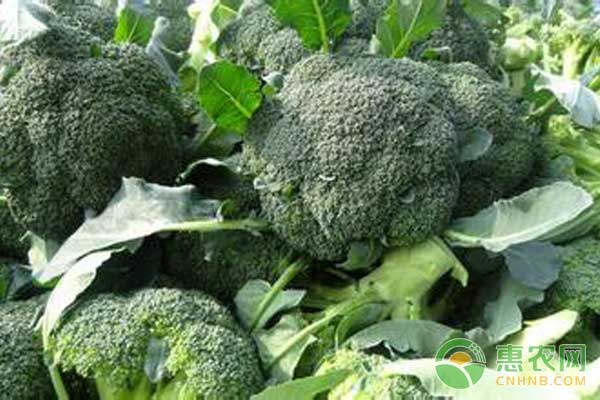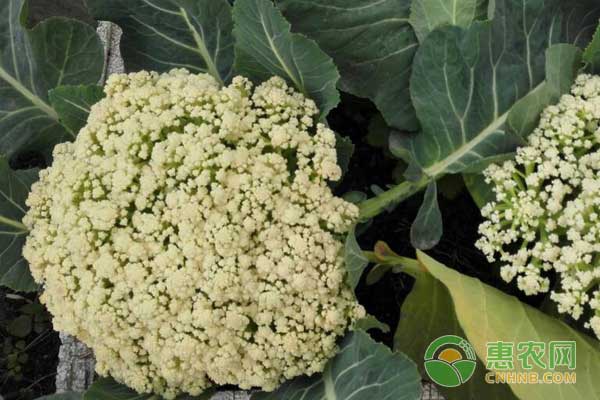The broccoli is a hybrid of kale and broccoli. It is rich in nutrients and unique in flavor, and is loved by people. In the planting process, zealand has the advantages of strong adaptability, long harvesting period, high yield, stable yield, high quality, strong resistance, and easy cultivation. It has a good prospect of promotion and development. After two years of introduction experiments, a set of high-quality cultivation techniques of cilantro was summarized, and the yield per 667m2 was generally 1,300-2 000kg. 1 variety selection Choose the high-quality and high-yield variety "Australian No. 1" zealand variety. 2 sowing seedlings 2.1 Sowing date The sowing date has a great influence on the yield and quality of cilantro. The suitable sowing date in Shenzhen is from mid-July to November. When the temperature is high, the shading net can be used to cool down. 2.2 Seed bed production and disinfection 3 to 4 days before nursery, close the greenhouse, then use 4g of sulfur per cubic meter of space, 8g of sawdust, stack the sawdust every 2m in the evening, spread a layer of sulfur powder, pour a small amount of alcohol, and ignite one by one. Seal the greenhouse to fumigate for a night. After disinfection, the soil is ploughed and broken, and then the car is lifted. The width of the car is 1.2-1.5 m, and the height of the car is 15 cm. After being flattened, it can be used as a seedbed for seedling raising. 2.3 Plug selection and disinfection Select a tray of 128 holes, then soak for 0.5h with 2% bleach or 0.5% potassium permanganate solution, rinse with water. 2.4 Loading Mix the substrate (special vegetable seedling substrate) with water, so that the water content of the substrate is about 50-60% (hand rubbing the loose hand), then fill the tray with the iron shovel, and finally scrape the excess substrate with the wooden board. Drop it to level it with the plug. 2.5 sowing The seeds of broccoli are short from sowing to germination, and generally do not require soaking and germination. After the substrate is placed, the water is poured (so that the water seeps from the bottom hole of the tray), and a hole of 1.2 cm deep is drilled at each hole, sowed, and then the substrate is covered, and one seed per hole is poured through the water. Generally, the amount of seeds used for planting 667m2 is about 15g. 2.6 Seedling management Seedling management should switch the shading net and ventilation window according to the changes of external environmental conditions, so that the temperature is controlled at about 23 °C. At the same time, water is mixed with the substrate humidity to make the substrate dry and wet, and the relative humidity of the air is controlled at 75%. about. After 3 days of sowing, the seeds begin to be unearthed. When one piece of true leaves is used, the temperature is appropriately lowered, the light is increased, the seedlings are prevented from growing, and 75% of chlorothalonil WP 600 times is sprayed to prevent rickets. In combination with the growth of the seedlings, a 0.1% compound fertilizer solution is sprayed once when the seedlings grow to 2 to 3 true leaves. The seedlings are replanted 7 to 10 days before planting, so that the environment in the greenhouse is as close as possible to the environment in the field, and the shade net is opened according to the weather. 2 days before planting, spray 75% chlorothalonil WP 800 times. 3 Fertilization The terrain is flat and the irrigation and drainage is convenient. The former crop is not the loam or sandy loam of the cruciferous family. Before planting, apply 2 500 to 3 000 kg of decomposing farmyard manure per 667 m2, then deep-turn it, and the target is finely leveled and then opened, and the car is 20 to 30 cm in height, 1.0 to 1.2 m in width, and 30 to 33 cm in width. 60kg of compound fertilizer and 1.5kg of borax were applied to the central groove of the car, and finally the film was laid. 4 colonization Seedlings grow 30 to 35 days, 4 to 5 true leaves are planted, watering before planting, is conducive to seedlings. Generally choose to plant in the afternoon on a sunny or cloudy day. Planting 2 rows per compartment, planting triangles, 1 plant per hole, row spacing 55-60cm, plant spacing 45-50cm, generally 2 500-3 000 plants per 667m2. After planting, it is necessary to pour the root water to facilitate the survival of the seedlings. 5 Field management 5.1 Topdressing and watering 10 to 15 days after planting, 1 time of biogas slurry + 10kg urea per 667m2; in the first-stage side of the moss, 1 time of biogas slurry + 15kg compound fertilizer per 667m2; in the secondary side of the moss harvesting period, 667m2 re-application of 1 biogas slurry + 15kg compound fertilizer. Keep the soil moist during the growing period. On sunny days with high temperatures, it is usually appropriate to water in the morning or evening. 5.2 Topping The mulberry moss is mainly collected from the side moss, so in the main flower ball 3 ~ 5cm, the main flower moss at 10 ~ 15cm can be topping and topping, in order to facilitate the germination and growth of the side moss. When the topping is removed, only the flower bud part is removed, and more flower moss parts are retained as much as possible, so that more side mosses are simultaneously sprouted from a plurality of axillary buds, and if the flower moss part is excessively removed, the amount and yield of the side moss are affected. 5.3 Integrated pest management The plant protection policy of “prevention first, comprehensive prevention†should be implemented, with agricultural control and physical control as the mainstay, supplemented by chemical control. The main pests and diseases of cilantro are soft rot, black rot, cabbage caterpillar, diamondback moth and ground tiger. Soft rot is a bacterial disease. In the early stage of the disease, 77% of the WP can be used 500-800 times or the agricultural streptomycin 200mg/L can be used alternately, 5 to 7 days, and even 2 ~3 times. Plutella xylostella (spirulina) mainly harms young leaves of cilantro, and can be used as BT wettable powder 1000 times liquid or 2.8% high. A vitamin salt oil 2000~3 000 times liquid or 2.5% polychlortetracycline suspension agent (èœå–œ) 1500 times liquid spray control, alternate use, every 5 to 7d1 times, and even 2 to 3 times. The cabbage caterpillar mainly harms the leaves of the broccoli, and can be sprayed with BT wettable powder 1000 times solution or 50% phoxim emulsifiable concentrate 1000 times solution or 5% cyhalothrin emulsion 2 000-3 000 times solution. Alternate use, every 5 to 7d1 times, and even 2 to 3 times. The small ground tiger mainly harms the young stems of the seedlings of broccoli, and the larvae can be directly sprayed on the rhizome of the seedlings of the broccoli seedlings with 48% chlorpyrifos EC or 50% phoxim emulsifiable concentrate, and the liquid is infiltrated into the soil. It is appropriate. Adults can be trapped with sweet and sour liquid and black light. Mix with 6 parts sugar, 4 parts vinegar, 1 part wine, 10 parts water, 1 part 90% trichlorfon pesticide, and hang in the planting area of ​​Westland. 6 harvesting When the side moss grows to 15 ~ 25cm, choose the sunny morning or evening in the sunny day, before the formation of the small flower ball is not scattered, the harvest is too late, the flower bud is easy to relax and bloom, and the aging of the moss branch affects the quality. When harvesting, harvest above the 2nd to 4th leaves, and pay attention to the bevel cut to prevent stagnant water. It is harvested once every 3 to 5 days, and can be continuously harvested 8 to 10 times, and the output is 1 300-2 000 kg/667 m2. The high yield of cilantro is a rare cropping industry for farmers to get rich! Male & Female Health,Protecting Prostate Extract,Strengthening Yang Extract,Maca Root Extract Powder Shaanxi Zhongyi Kangjian Biotechnology Co.,Ltd , https://www.zyplantextract.com

How is the zealand moss? High-yield planting technology
Next Article
Jade fungus planting technology